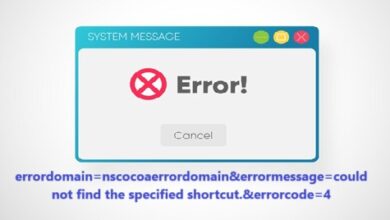FintechAsia Error Codes: A Comprehensive Guide for Developers

Discover comprehensive insights into FintechAsia Error Codes. Understand common issues, troubleshoot effectively, and streamline your experience with FintechAsia’s platform. Gain clarity with step-by-step guides for error resolutions. Perfect for developers and users seeking hassle-free solutions!
Introduction to FintechAsia and its error codes
FintechAsia has rapidly emerged as a key player in the financial technology landscape, revolutionizing how businesses and consumers interact with financial services. As developers navigate this dynamic ecosystem, understanding the details of FintechAsia error codes becomes essential. These error codes are not just random numbers; they represent critical information that can help troubleshoot issues and enhance user experiences.
For any developer working within FintechAsia’s framework, decoding these codes is akin to possessing a secret decoder ring. It allows for swift problem resolution and raises smoother integrations. Whether you’re new to the platform or a seasoned pro, getting familiar with these error codes will allow you to tackle challenges head-on and optimize your applications effectively. Let’s dive deeper into what these codes mean and how they can impact your development experience.
The importance of understanding error codes in FintechAsia
Understanding error codes in FintechAsia is crucial for developers. These codes act as the first line of communication between your application and the original system. When something goes wrong, they provide instant feedback.
Error codes help identify issues quickly. This allows developers to take action before a minor bug intensifies into a significant problem. Without this understanding, troubleshooting can become time-consuming and frustrating.
Moreover, knowing these error codes enhances user experience. If an application fails gracefully with clear messages, users are less likely to abandon it out of confusion or frustration.
Additionally, insights increased from error code analysis lead to better software design. Developers can refine their applications based on repeated issues indicated by specific codes.
Grasping these nuances empowers teams to create strong solutions that meet user needs effectively and efficiently.

Common FintechAsia error codes and their meanings
Understanding common FintechAsia error codes is essential for developers navigating the platform.
One frequently encountered code is 400. This indicates a “Bad Request.” It often stems from invalid input, such as missing parameters or incorrect data formats.
Another significant code is 401, signaling “Unauthorized.” This typically occurs when API keys are missing or invalid, blocking access to resources.
The 404 error represents “Not Found.” It suggests that the requested resource cannot be located on the server. This can happen if an endpoint has changed or been removed.
We have the 500 error code, which denotes an “Internal Server Error.” This points to issues within FintechAsia’s servers and may require patience while they resolve it.
Each of these codes conveys vital information that aids in troubleshooting and improving your application’s performance.
Troubleshooting tips for developers
When dealing with FintechAsia error codes, a systematic approach can save time. Start by carefully reading the error message. It often contains indications about what went wrong.
Next, check your API request format. Ensure that all required fields are included and correctly formatted. Missing or incorrect parameters can lead to common errors.
Logging is essential for troubleshooting. Implement comprehensive logging in your application to capture details around failures. This will help you pinpoint issues quickly.
Don’t hesitate to refer the official documentation for specific error codes and their meanings. Sometimes, you might find relevant solutions directly tied to those errors.
If you’re still stuck, consider reaching out to developer communities or forums related to FintechAsia. Engaging with peers can provide fresh insights and potential fixes that you may not have considered before.
Best practices for handling FintechAsia errors
When dealing with FintechAsia error codes, having a structured approach is crucial. Start by logging all errors you encounter. This practice aids in identifying patterns and recurring issues.
Next, implement robust error handling mechanisms within your code. Use try-catch blocks to manage exceptions smoothly without disrupting user experience.
Document each error code comprehensively for your team’s reference. This resource will streamline troubleshooting efforts and enhance collaboration among developers.
Additionally, consider adding alert systems that notify your team when specific critical errors arise. Quick responses can ease potential impacts on users.
Regularly review and refine your codebase to minimize weaknesses that could lead to these errors in the first place. It keeps your application running efficiently while also boosting security measures against unforeseen disruptions.
How to prevent FintechAsia errors from occurring
To prevent FintechAsia errors, proactive measures are essential. Start by thoroughly validating input data before processing it. This simple step can eliminate many common issues.
Next, ensure that your API integrations are strong and up-to-date. Regular checks on the endpoints will help you catch any differences early on.
Implement comprehensive logging for all transactions and processes. This allows you to track irregularities in real-time, making troubleshooting easier.

Also, consider setting up automated alerts for specific error codes. Timely notifications enable quicker responses to potential problems.
Conduct regular code reviews with your team to spot exposures or outdated practices. Collaboration raises a stronger understanding and helps everyone stay informed about best practices related to FintechAsia error codes.
The importance of staying updated on FintechAsia error codes
Staying updated on FintechAsia error codes is crucial for developers working in the fintech space. The landscape of technology and finance evolves rapidly, which means that error codes can change or be added over time.
Understanding the most current codes helps avoid costly downtime during application development or when troubleshooting issues. A single outdated code could lead to unnecessary delays and frustration.
Additionally, staying informed enables better communication within teams. When everyone understands what each error code signifies, it raises collaboration and speeds up problem resolution.
Moreover, being proactive about updates can enhance user experience. Quick responses to errors improve satisfaction and trust among users trusting on your services.
Engaging with community resources such as forums or official certification ensures you’re not left behind as new challenges arise in this dynamic environment. Regularly checking for updates equips developers with knowledge critical for maintaining seamless operations.
Conclusion
Understanding FintechAsia error codes is essential for developers working in the fintech space. These codes serve as vital indicators of system performance and potential issues.
By familiarizing yourself with these errors, you enhance your ability to troubleshoot effectively. This not only improves user experience but also ensures smoother operations within your applications.
Staying informed about updates to error codes can save time and resources in the long run. It’s a proactive approach that fosters innovation while justifying risks associated with unexpected errors.
Adopting best practices when handling these codes will streamline development processes considerably. Such diligence ultimately leads to more reliable fintech solutions, benefiting both developers and users alike.
FAQs on fintechasia error codes
What are FintechAsia error codes?
FintechAsia error codes are specific numerical indicators that represent various issues encountered in the platform. Understanding these codes can help developers quickly identify and resolve problems.
How do I find a list of all FintechAsia error codes?
You can access comprehensive documentation on FintechAsia’s official website or developer portal, which provides details about each code along with descriptions and potential resolutions.
Why is it essential to understand these error codes?
Understanding these error codes enables developers to troubleshoot efficiently. It minimizes downtime and enhances user experience by ensuring seamless operation within their applications.
Can I ignore minor errors from FintechAsia?
While some minor errors may seem small, it’s best not to ignore them completely. They could increase into more significant issues if left unresolved, impacting performance or compliance.
What resources are available for learning more about handling errors in FintechAsia?
Developers have access to online forums, community discussions, and dedicated support channels provided by FintechAsia for further assistance regarding errors and troubleshooting methods.
For More Updates Please Visit Us: Blogsternation.co.uk



